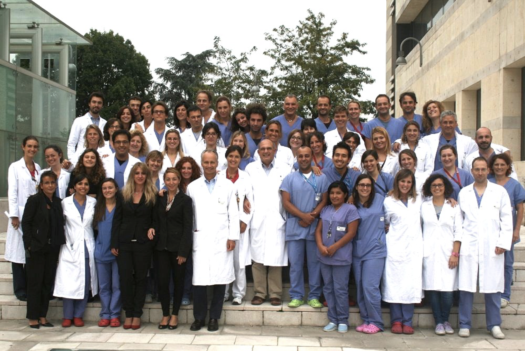A team from the Hematology and Bone Marrow Transplantation Unit of the San Raffaele Scientific Institute in Milano, Italy analyzed a group of allogeneic stem cell transplant (allo-SCT) patients with HHV-6 reactivation and found that poor immune reconstitution in these individuals correlated with significantly lower survival.
In the HHV-6 positive group, those with CD3+ lymphocyte levels equal to or greater than 200 cells per microliter had an overall survival at one year of 63% compared to 11% in those with CD3+ levels under 200 cells per microliter. The findings indicate that immune reconstitution plays a significant role in outcomes for transplant patients battling an HHV-6 infection.
For 54 adult patients with HHV-6 reactivation, overall survival at 1 year was only 38%, significantly lower than the survival rate of those who did not experience HHV-6 infections.
HHV-6 is able to induce CD4 and CD8 depletion, or lymphopenia, and extended lymphopenia has been observed by others (Sultanova 2013, Comar 2005). Comar et al. proposed that the depletion of CD3+ T cells in a SCT patient could be suggestive of infection involving the progenitor cells of the donor T lineage and possibly impaired viral clearance. Additionally, using the drug alemtuzumab for T-cell depletion has been shown to increase the risk of HHV-6 encephalitis after allo-SCT (Vu 2007, Schmidt-Hieber 2011). Similarly, use of the anti-CD3 antibody BC3 has increased the rates of HHV-6 reactivation and encephalitis in bone marrow transplant patients (Zerr 2001).

Hematology and Bone Marrow Transplantation Unit, San Raffaele Scientific Institute, Milan, Italy, with Dr. Fabio Ciceri in the center.
In this cohort, the investigators also identified acute graft versus host disease (GvHD) grade III-IV and disease status at transplant as factors that negatively affected overall survival. The correlation between the presence of HHV-6 in CSF and the development of encephalitis was also confirmed; CSF was obtained from 7 of 10 patients with HHV-6 encephalitis, and it tested positive in all 7 cases. The authors note that overall survival in the cohort was not significantly influenced by steroid administration, time after allo-SCT, type of antiviral prophylaxis, plasma viral load, or organ involvement.
All but 5 patients received acyclovir as viral prophylaxis, and 37 patients received antiviral therapy, mainly consisting of i.v. foscarnet. Although the antiviral treatment (foscarnet and ganciclovir, alone and or in combination) appeared to be effective in our study, and resulted in a significant decrease in plasma viral load, it did not prevent subsequent death in a large proportion of patients. The monitoring of CD3+ cell counts in allo-SCT recipients may allow for more timely treatment for the prevention of HHV-6-associated damage.
For further information on this topic, visit our page on HHV-6 and transplant complications.
Read the full paper here: Greco 2016.

